This is named after Leofric, Earl of Mercia, who founded St Mary’s Priory, Coventry’s first cathedral. A larger-than-life statue of Leofric and his wife (Countess Godiva) can be seen above the main entrance to the council house, opposite this pub.
Prints and text about the Earl of Mercia.
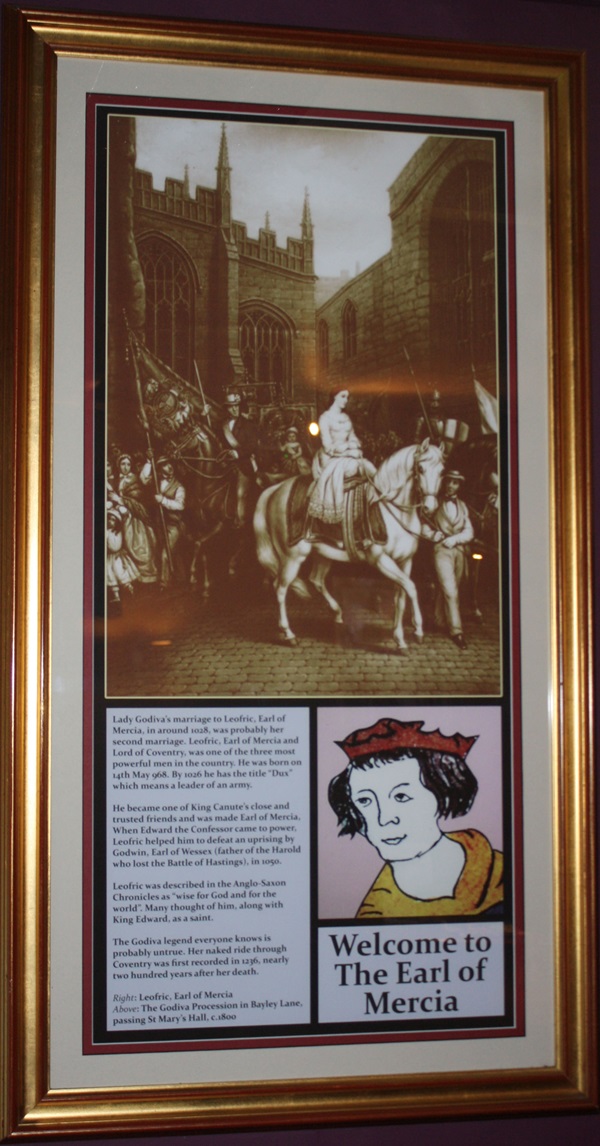
The text reads: Lady Godiva’s marriage to Leofric, Earl of Mercia, in around 1028, was probably her second marriage. Leofric, Earl of Mercia and Lord of Coventry, was one of the three most powerful men in the country. He was born on 14th May 968. By 1026 he has the title “Dux” which means a leader of an army.
He became one of the King Canute’s close and trusted friends and was made Earl of Mercia. When Edward the Confessor came to power, Leofric helped him to defeat an uprising by Godwin, Earl of Wessex (father of the Harold who lost the Battle of Hastings), in 1030.
Leofric was described in the Anglo-Saxon Chronicles as “wise for God and for the world”. Many thought of him, Along with King Edward, as a saint.
The Godiva legend everyone knows is probably untrue. Her naked ride through Coventry was first recorded in 1236, nearly two hundred years after her death.
Right: Leofric, Earl of Mercia
Above: The Godiva Procession in Bayley Lane, passing St Mary’s Hall, c.1800.
An illustration and text about Bayley Lane.
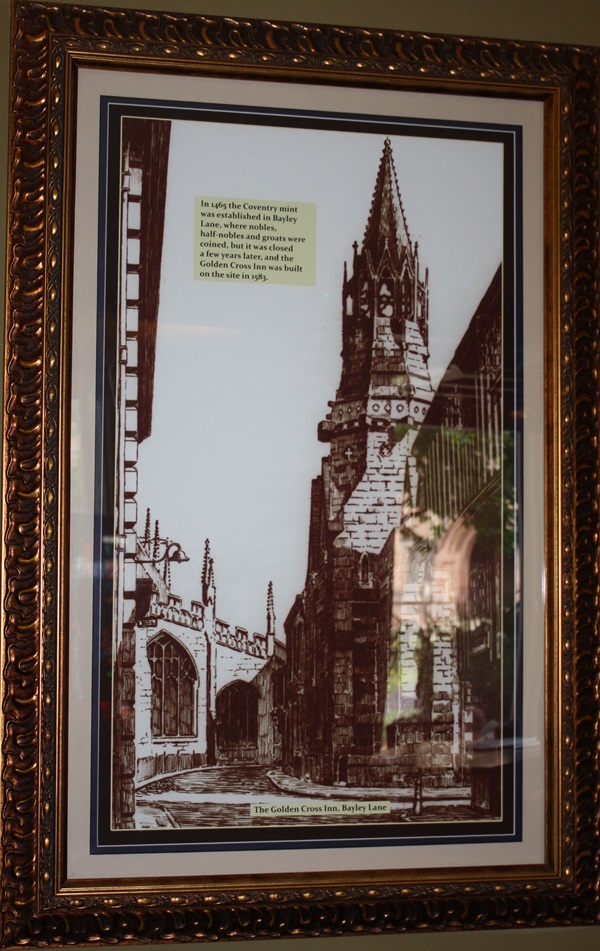
The text reads: In 1465 the Coventry mint was established in Bayley Lane, where nobles, half-nobles and groats were coined, but it was closed a few years later, and the Golden Cross Inn was built on the site in 1583.
An illustration and text about Broadgate.
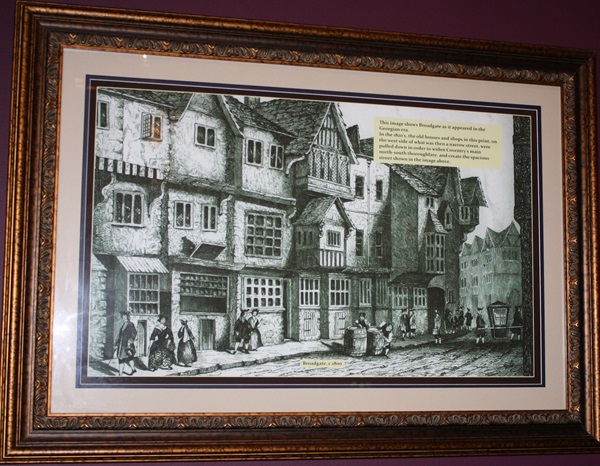
The text reads: This image shows Broadgate as it appeared in the Georgian era.
In the 1820’s, the old houses and shops in this print, on the west side of what was then a narrow street, were pulled down in order to widen Coventry's main north-south thoroughfare, and create the spacious street shown in the image above.
An illustration and text about the Coventry Cross in Broadgate.
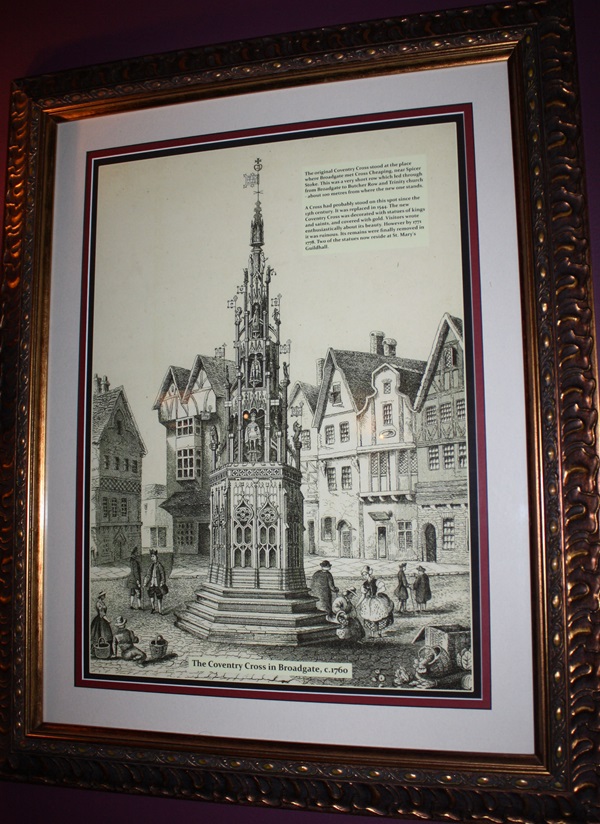
The text reads: The original Coventry cross stood at the place where Broadgate met Cross Cheaping, near Spicer Stoke. This was a very short row which led through from Broadgate to Butcher Row and Trinity church – about 100 metres from where the new one stands.
A Cross had probably stood on this spot since the 13th century. It was replaced in 1544. The new Coventry Cross was decorated with statues of kings and saints, and covered with gold. Visitors wrote enthusiastically about its beauty. However by 1771 it was ruinous. Its remains were finally removed in 17778. Two of the statues now reside at St Mary’s Guildhall.
An illustration of Broadgate, c1800.
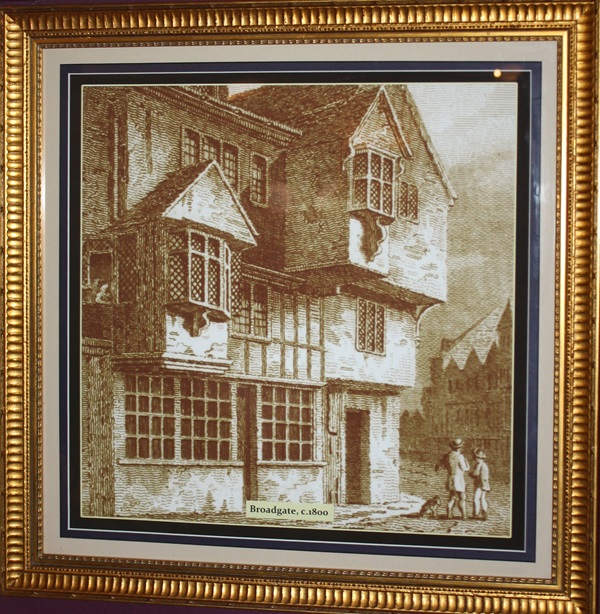
A photograph of the Choir of St Michael’s Church.
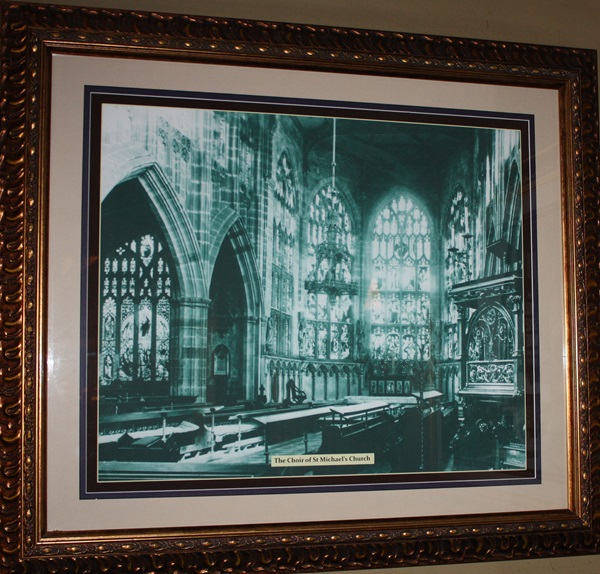
A photograph of High Street, Coventry.
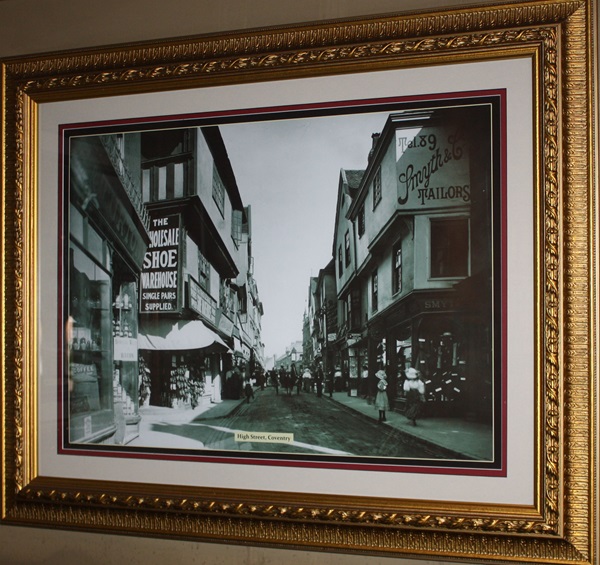
An illustration of High Street and Smithford Street showing Peeping Tom and the King’s Head Hotel, c1795.
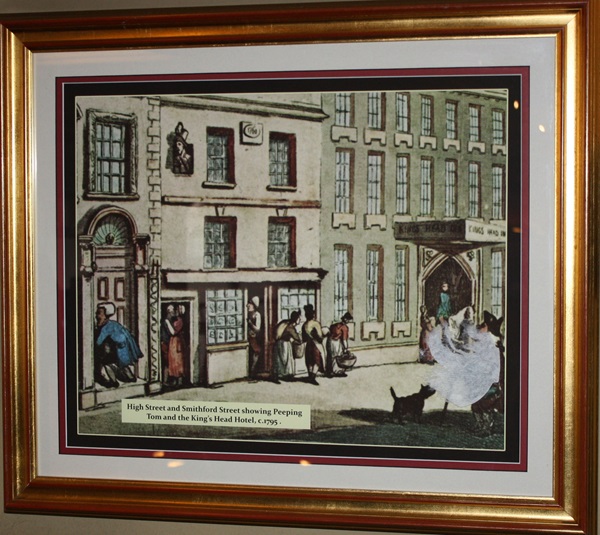
An illustration and text about Bayley Lane.
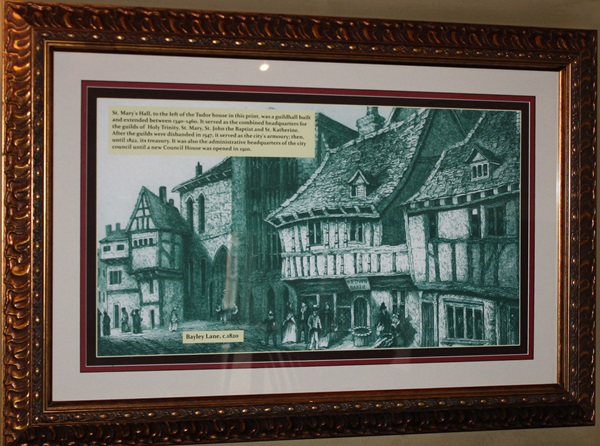
The text reads: St. Mary’s Hall, to the left of the Tudor house in this print, was guildhall built and extended between 1340-1560. It served as the combined headquarters for the guilds of Holy trinity, St Mary, St John the Baptist and St Katherine. After the guilds were disbanded in 1547, it served as the city’s armoury; then, until 1822, its treasury. It was also the administrative headquarters of the city council until a new Council House was opened in 1920.
An illustration of Coventry from the Priory Mill Dam, c1820.
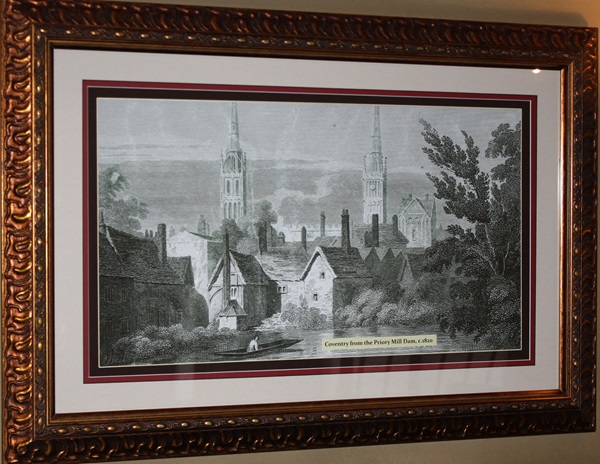
An illustration and text about St Mary’s Priory.
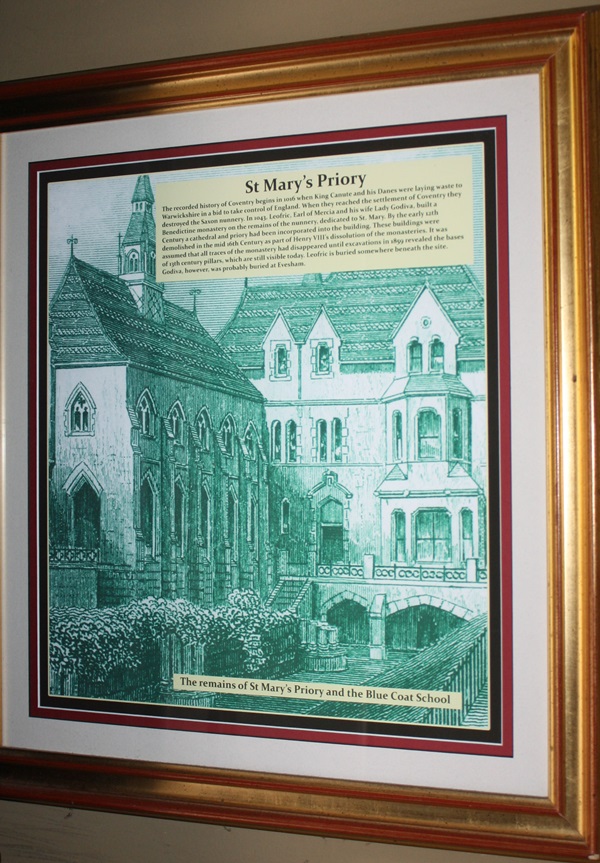
The text reads: The recorded history of Coventry begins in 1016 when King Canute and his Danes were laying waste to Warwickshire in a bid to take control of England. When they reached the settlement of Coventry they destroyed the Saxon nunnery. In 1043, Leofric, Earl of Mercia and his Wife Lady Godiva, built a Benedictine monastery on the remains of the nunnery, dedicated to St Mary. By the early 12th century a cathedral and priory had been incorporated into the building. These buildings were demolished in the mid-16th Century as part of Henry VIII’s dissolution of the monasteries. It was assumed that all traces of the monastery had disappeared until excavations in 1859 revealed the bases of 13th century pillars, which are still visible today. Leofric is buried somewhere beneath the site. Godiva, However, was probably buried at Eversham.
External photograph of the building – main entrance.
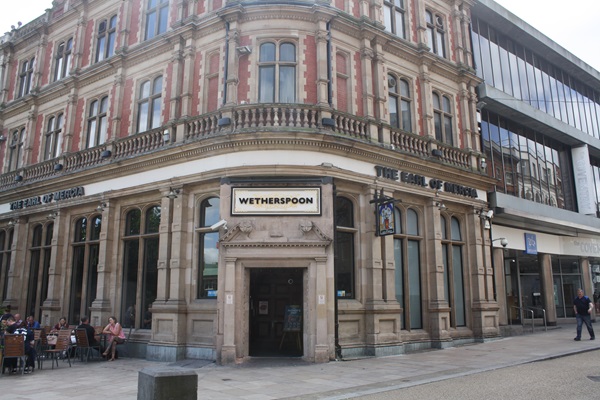
If you have information on the history of this pub, then we’d like you to share it with us. Please e-mail all information to: pubhistories@jdwetherspoon.co.uk